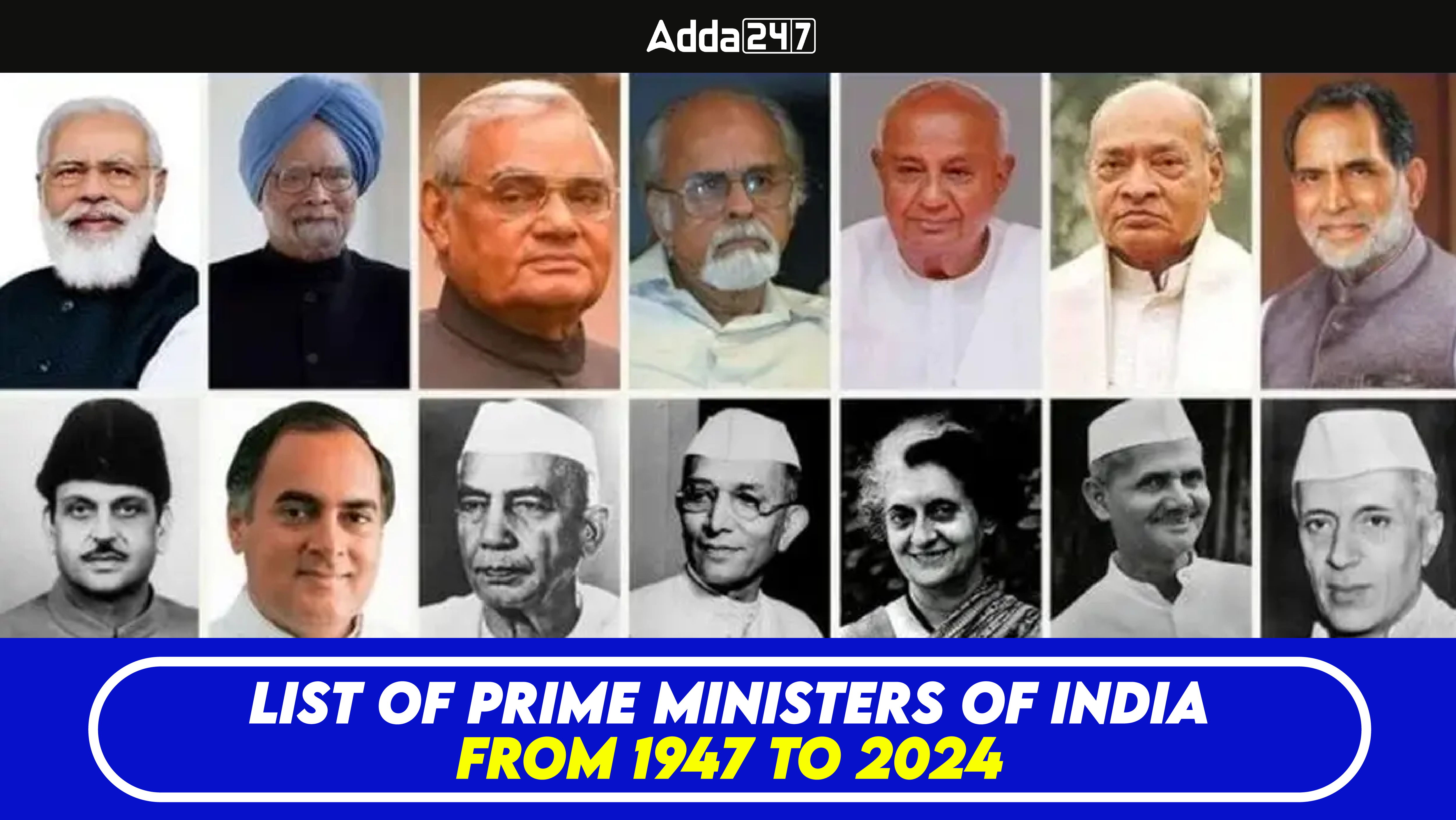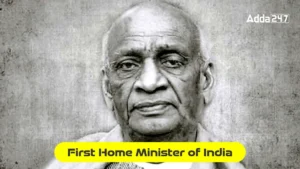India, since its independence in 1947, has seen a diverse array of leaders guiding the nation through various phases of development and change. Each Prime Minister has left a unique imprint on the country’s political, economic, and social landscape. Here’s a comprehensive list of India’s Prime Ministers, from the first in 1947 to the present in 2024, highlighting their terms and significant contributions.
Who is the Prime Minister of India?
In India, the Prime Minister holds the highest governmental position. India operates under a parliamentary system, where the Prime Minister serves as both the head of the executive branch and the chief authority. The Lok Sabha, India’s main legislative body, functions as the lower house of Parliament. Normally, the Prime Minister leads the party or coalition with the most seats in the Lok Sabha. This setup ensures ongoing accountability, as the Lok Sabha continually scrutinizes the Prime Minister’s choices and conduct.
Prime Minister of India List from 1947 to 2024
Explore the dynamic history of India’s governance through its Prime Ministers, spanning from the nation’s independence in 1947 to the present day in 2024. This chronological list showcases the diverse leadership and significant milestones that have shaped India’s political landscape over decades.
| Name | Tenure | Days of Service |
| Jawaharlal Nehru | 15 Aug 1947 – 27 May 1964 | 16 years 286 days |
| Gulzari Lal Nanda | 27 May 1964 – 9 Jun 1964 | 13 days |
| Lal Bahadur | 9 Jun 1964 – 11 Jan 1966 | 1 year 216 days |
| Gulzari Lal | 11 Jan 1966 – 24 Jan 1966 | 13 days |
| Indira Gandhi | 24 Jan 1966 – 24 Mar 1977 | 11 years 59 days |
| Morarji Desai | 24 May 1977 – 28 Jul 1979 | 2 years 126 days |
| Charan Singh | 28 Jul 1979 – 14 Jan 1980 | 170 days |
| Indira Gandhi | 14 Jan 1980 – 31 Oct 1984 | 4 years 291 days |
| Rajiv Gandhi | 31 Oct 1984 – 02 Dec 1989 | 5 years 32 days |
| V.P. Singh | 02 Dec 1989 – 10 Nov 1990 | 343 days |
| Chandra Shekhar | 10 Nov 1990 – 21 Jun 1991 | 223 days |
| P.V. Narsimha Rao | 21 Jun 1991 – 16 May 1996 | 4 years 330 days |
| Atal Bihari Vajpayee | 16 May 1996 – 01 Jun 1996 | 16 days |
| H.D. Deve Gowda | 01 Jun 1996 – 21 Apr 1997 | 324 days |
| Inder Kumar Gujral | 21 Apr 1997 – 19 Mar 1998 | 332 days |
| Atal Bihari Vajpayee | 19 May 1998 – 22 May 2004 | 6 years 64 days |
| Manmohan Singh | 22 May 2004 – 26 May 2014 | 10 years 4 days |
| Narendra Modi | 26 May 2014 – present | – |
Constitutional Articles Related to Prime Minister of India
The Indian Constitution outlines the role and responsibilities of the Prime Minister in four key articles:
- Article 74: The Prime Minister leads the Council of Ministers, advising and assisting the President. This article outlines the Prime Minister’s role in decision-making and communication with the President and Cabinet.
- Article 75: The President appoints the Prime Minister, with no specific election procedure defined. The Prime Minister and Cabinet must resign if the Parliament passes a no-confidence motion against them.
- Article 78: This article outlines the Prime Minister’s duties, including communicating all decisions made by the Council of Ministers to the President, and responsibilities in exercising executive power.
Appointment of Prime Minister of India
Prime Minister holds the highest governmental position. Appointed by the President of India, they lead the majority party in the Lok Sabha, the lower house of the Indian Parliament. According to Article 75 of the Indian Constitution, the President appoints the Prime Minister based on their ability to secure the confidence of the Lok Sabha members. Additionally, the Prime Minister heads the Union Council of Ministers, the principal decision-making body of the Indian government.
First Prime Minister of India – Jawaharlal Nehru
Jawaharlal Nehru, India’s inaugural Prime Minister, holds the record for the longest tenure in office. Notably, he was the first Prime Minister to pass away while serving. Nehru’s leadership spanned 18 years, initially as interim Prime Minister and subsequently as the head of the Republic of India from 1950 onward.
Gulzarilal Nanda
Gulzarilal Nanda assumed the role of acting Prime Minister of India, serving for brief periods totaling 26 days. Following the deaths of Jawaharlal Nehru in 1964 and Lal Bahadur Shastri in 1966, Nanda filled the interim position until the Indian National Congress elected new leaders. Notably, he received the Bharat Ratna, India’s highest civilian honor, in 1997.
Lal Bahadur Shastri
Lal Bahadur Shastri, India’s second Prime Minister, is renowned for his iconic slogan “Jai Jawan, Jai Kisan” during the 1965 Indo-Pak war. A distinguished Indian statesman and politician, he held the premiership from 1964 to 1966, and previously served as the country’s Home Minister from 1961 to 1963.
First Woman Prime Minister of India – Indira Gandhi
Indira Priyadarshini Gandhi, a prominent Indian politician and stateswoman, held the position of India’s third Prime Minister in two separate terms. Serving from 1966 to 1977 and again from 1980 until her tragic assassination in 1984, she remains the sole female Prime Minister in India’s history. As a key figure within the Indian National Congress, her leadership left a lasting impact on Indian politics.
Morarji Desai
Morarji Desai, an Indian freedom fighter turned politician, assumed office as the fourth Prime Minister of India from 1977 to 1979, heading the government under the Janata Party banner. Throughout his extensive political journey, he held significant roles including Chief Minister of Bombay State, Home Minister, Finance Minister, and Deputy Prime Minister.
Charan Singh
Charan Singh assumed office as Prime Minister on July 28, 1979, with backing from Indira Gandhi’s Congress (I) party and Yeshwantrao Chavan of the Congress (Socialist) party as his Deputy Prime Minister. However, before he could establish his majority in the Lok Sabha, Gandhi withdrew her support, leading to Singh’s resignation on August 20, 1979. This marked him as the sole Prime Minister to never secure parliamentary confidence, serving for just 23 days.
Rajiv Gandhi
Rajiv Gandhi, an Indian statesman, held the position of the sixth Prime Minister of India from 1984 to 1989. His ascension to power followed the tragic assassination of his mother, Prime Minister Indira Gandhi, in 1984. Notably, he became the youngest Prime Minister in Indian history, assuming office at the age of 40.
V.P. Singh
Vishwanath Pratap Singh, commonly known as V. P. Singh, was an Indian statesman who served as the seventh Prime Minister of India from 1989 to 1990. Additionally, he held the title of the 41st Raja Bahadur of Manda. Notably, Singh is distinguished as India’s sole Prime Minister with a royal lineage.
Chandra Shekhar
Chandra Shekhar, an Indian politician, held office as the eighth Prime Minister of India from November 10, 1990, to June 21, 1991. Leading a minority government formed by a splinter group of the Janata Dal, he relied on external backing from the Indian National Congress. Notably, Shekhar was unique among Indian Prime Ministers for never having previously served in any governmental capacity. His administration faced criticism, often described as ineffectual and constrained, especially considering it was formed with the smallest representation of party MPs in the Lok Sabha.
P.V. Narsimha Rao
Pamulaparthi Venkata Narasimha Rao, or P. V. Narasimha Rao, made history as India’s first Prime Minister hailing from the southern region of the country. His tenure spanned 4 years and 330 days, from 1991 to 1996. Renowned as a distinguished lawyer, statesman, and politician, Rao’s leadership left a significant mark on Indian politics during his time in office.
Atal Bihari Vajpayee
Atal Bihari Vajpayee, a revered Indian politician and statesman, held the position of the 10th Prime Minister of India for three distinct periods. Initially, his tenure lasted a mere 13 days in 1996, followed by a 13-month term from 1998 to 1999, and ultimately a complete term from 1999 to 2004. Notably, he was the first non-Indian National Congress Prime Minister to serve a full term, marking a significant shift in Indian political history.
Inder Kumar Gujral
Inder Kumar Gujral, a distinguished Indian diplomat, politician, and freedom fighter, held the esteemed position of the 12th Prime Minister of India. His tenure, spanning 332 days, commenced in April 1997 and concluded in March 1998. Gujral’s leadership during this period contributed significantly to India’s political landscape.
Manmohan Singh
Manmohan Singh, an eminent Indian politician, economist, and statesman, made history as the first Sikh to hold the esteemed position of Prime Minister of India. Serving for an impressive duration of 10 years and 4 days, from 2004 to 2014, he emerged as the third longest-serving Prime Minister, following Jawaharlal Nehru and Indira Gandhi. A member of the Indian National Congress, Singh’s re-election after completing a full five-year term mirrored Nehru’s earlier accomplishment.
Current Prime Minister of India – Narendra Modi
Narendra Modi, the 14th and incumbent Prime Minister of India, has marked his tenure by being the fourth Prime Minister to serve two consecutive terms. Assumed office on May 26, 2014, Modi holds the distinction of being the only Prime Minister born after India’s independence. Prior to his premiership, he served as the Chief Minister of Gujarat from 2001 to 2014 and currently represents Varanasi in the Indian Parliament.





 Which City is known as the City of Bambo...
Which City is known as the City of Bambo...
 Who was the First Home Minister of India...
Who was the First Home Minister of India...







